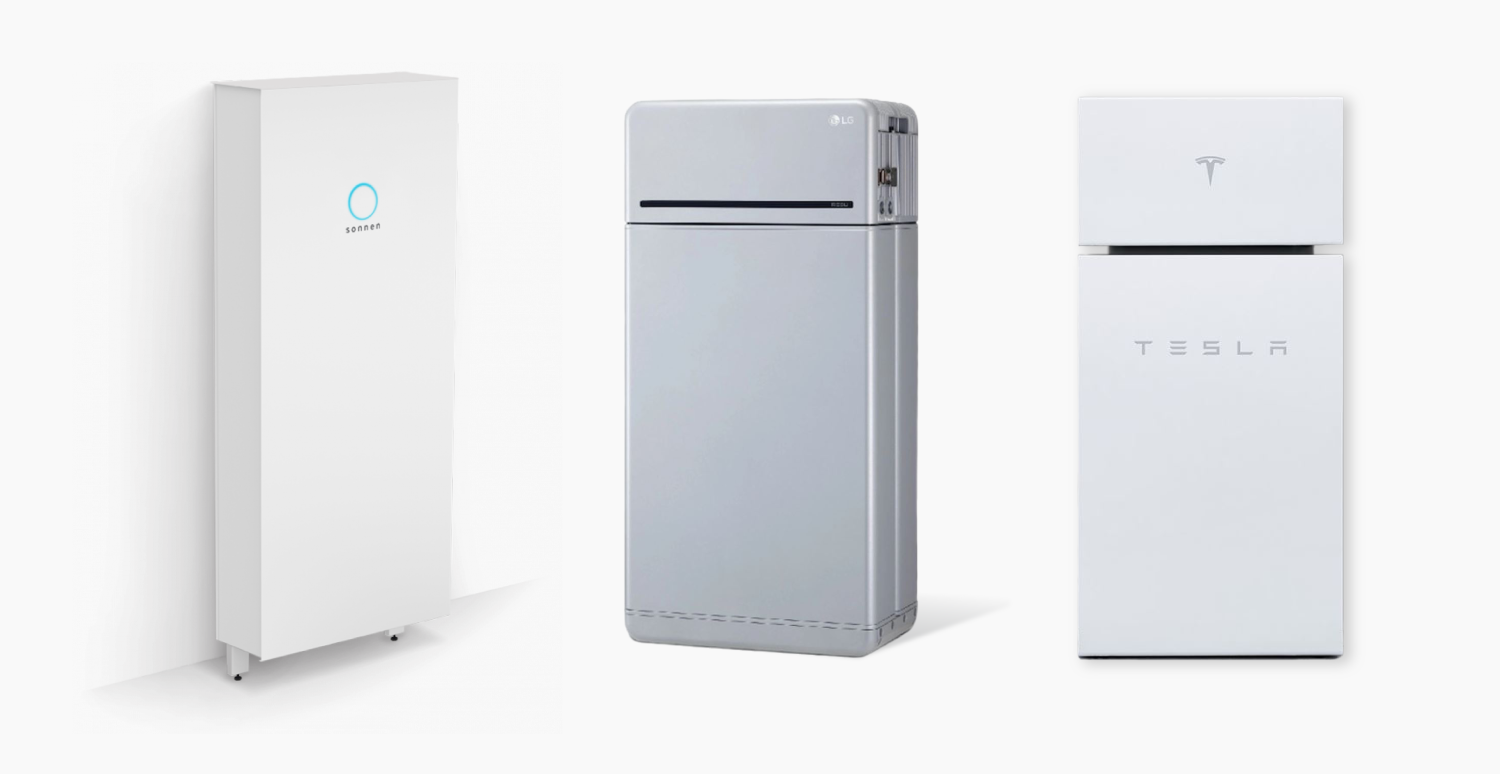
Shopping for a solar battery can be a bit overwhelming. There are a lot of options and home energy storage is still a relatively new concept to most homeowners.
To help you choose the best solar battery to pair with your solar panel system, we’ve broken down the key factors you should keep an eye out for in our 2023 solar battery buyer’s guide.
Why you can trust SolarReviews:
SolarReviews is the leading American website for consumer reviews and ratings of residential solar panels and solar panel installation companies. Our industry experts have over two decades of solar experience combined and maintain editorial independence for their reviews. No company can pay to alter the reviews or review scores shown on our site. Learn more about SolarReviews and how we make money.Key takeaways
- If you are looking to power your home for an extended period of time, look for batteries with high capacity ratings.
- If you want to run multiple appliances at once, you should purchase a battery with a high continuous power rating.
- If you want to maximize how much money you are saving with a solar battery, look for batteries with high round-trip efficiencies.
- If you have limited space, going for a nickel manganese cobalt (NMC) battery will be able to hold the most electricity in the smallest area.
- If safety is a main concern of yours, consider pairing your solar energy system with a lithium iron phosphate (LFP) battery.
Factors to consider when choosing a solar battery
1. Capacity rating
The capacity of a battery tells you how many kilowatt-hours (kWh) of electricity it can store. The usable capacity dictates how long your battery can send electricity to your home.
Some batteries may show two capacity ratings: the total capacity and the usable capacity. The one you want to pay attention to is the usable capacity, which is how much of the electricity the battery stores that you actually can use.
You should consider batteries with usable capacity ratings of at least 10 kWh, as they’re suitable for most homeowners' energy needs and provide a decent amount of backup power in the event of a blackout.
You can also install multiple batteries to increase the amount of electricity your energy storage system can hold.
2. Power rating
A battery’s power rating represents how much electricity it can deliver to your home at once, measured in kilowatts (kW). The power rating tells you how many - and which - appliances you can run simultaneously.
Solar batteries will usually have two power ratings: the continuous power rating and peak power rating. The continuous power rating is how much electricity the battery can put out continuously (hence the name) for appliances that need a constant power supply, like your refrigerator.
The peak power rating is the maximum amount of electricity a battery can release for a short period of time, which allows you to keep appliances on that need a burst of power in order to get up and running, like an air conditioner.
Most solar batteries have a continuous power rating of 5 kW and a peak power rating of 7 kW, so at the very least you should look for batteries with power ratings in this range. Therefore, if you have a lot of appliances you want to power at once, you should consider looking for batteries with higher power ratings.
Tip! Look at power and capacity ratings together. Look at the power and capacity ratings together when you’re comparing batteries. If you have a high-capacity battery with a low power rating, you’ll only be able to power a few appliances, but you can do so for a long time. A battery with a high power rating but a low storage capacity will be able to power more appliances for a shorter period of time.
3. Round-trip efficiency
The round-trip efficiency of a solar battery represents the amount of energy you can use from your solar battery compared to the amount of energy it took to store that energy.
Say your solar panels sent 10 kWh of electricity to your battery, but only 7 kWh of that electricity was actually stored and can be used. That means 3 kWh were used by the battery’s operating system to store and release the electricity, making the battery’s round-trip efficiency rating 70%.
Our advice is to go for a battery with an efficiency rating of 80% or higher. Higher efficiency batteries can save more money in the long run because more of the solar electricity produced can be used by your appliances, instead of being lost to the battery storing the energy.
4. Lifespan
Most lithium-ion batteries have a battery life of at least 10 years with regular use. As you use a battery, it loses its ability to hold a charge. Think about how fast your cell phone battery runs out after you’ve had it for a few years - the same thing happens to solar batteries.
There are three ways in which the battery lifespan is typically measured:
- Years
- Estimated cycles
- Estimated throughput
The battery cycle life is how many times the battery can be completely charged and discharged. The throughput is an estimate of the amount of electricity the battery will release over a period of time, and will vary depending on the starting capacity of the battery.
When shopping for batteries, look for ones that are warrantied to operate at at least 70% of their original capacity after 10 years, or 10,000 cycles, whichever comes first.
5. Battery type
A battery's type is determined by the chemicals within it that are used to store energy. The battery type, or battery chemistry, determines almost every aspect of how the battery system will work.
Although lead-acid batteries were once the most popular battery used for solar-plus-storage systems, lithium-ion batteries have recently become the fan-favorite. There are two main types of lithium-ion batteries sold today: nickel manganese cobalt (NMC) and lithium iron phosphate (LFP).
NMC batteries are more common on the market and are more energy-dense, meaning that they can hold more electricity in a smaller area. They also tend to be a bit cheaper. LFP batteries, however, can last longer than NMC batteries.
If you want a more detailed look at the different types of solar batteries, check out our battery comparison guide.
Tip! Lead-acid batteries for off-grid vacation homes. While lead-acid batteries are no longer the deep-cycle battery of choice for full-time residences, they are still used often as solar energy storage for off-grid systems on vacation homes. Sealed lead-acid batteries, like AGM batteries and gel batteries, can provide backup power at a low cost and are maintenance-free, so they can be left alone - meaning, you don’t have to worry about spending a fortune on a home you’re only in for part of the year.
6. Safety rating
All of the solar batteries on the market meet a set of strict safety requirements in order to be professionally installed in homes. However, certain battery chemistries are a tad safer than others.
NMC lithium-ion batteries are more sensitive to temperature changes than LFP batteries, which means NMC batteries are more likely to experience something called thermal runaway (AKA catching on fire) if mishandled.
The chances of this happening are extremely low and they’re still incredibly safe to install. But because LFP batteries are more resilient to high temperatures, they are less likely to catch fire, making them the “safest” lithium-ion choice.
7. Cost
On average, a solar battery installation will cost between $9,000 and $14,000 total. The good news is that battery storage systems qualify for the 30% federal solar tax credit, and some states offer additional storage incentives that help decrease a battery installation’s high upfront cost.
Learn more: Guide to solar rebates and incentives
The total price is definitely good to know, but the best way to compare prices between two batteries is to look at the cost per kWh. The cost per kWh tells you how much you’ll pay for each kWh of electricity you can store in the battery.
For example, the Tesla Powerwall costs $11,500 including installation. The LG Chem RESU Prime costs around $12,000. At first glance, it seems like the Powerwall is the best deal.
But the LG Chem RESU Prime can store more electricity than the Powerwall, so you actually pay less per kWh of storage with the LG. The Powerwall costs around $777 per kWh, whereas the LG Chem RESU Prime would be about $750 per kWh.
Tip! Consider more than just the cost. While cost is definitely an important aspect of picking a battery, it shouldn’t be the only factor you focus on. Just like with a solar installation, you get what you pay for when it comes to a solar battery. You want to make sure your battery is produced by a reputable manufacturer and you choose a trustworthy installer who can properly meet your needs. Which, in some cases, means you might have to pay a bit more.
Is a solar battery right for you?
Solar battery storage is becoming more popular, but that doesn’t mean it’s right for everyone. Despite being cheaper than ever, solar batteries are still quite expensive, so there are few cases in which installing a solar battery makes financial sense.
One of those cases is if your utility offers anything other than full retail net metering. If it does offer full retail net metering, then a solar battery won’t save you any additional money on your electricity bill. It will only add money onto your total solar system installation cost and extend your solar payback period.
Learn more: Net metering vs. solar battery storage - which makes the most financial sense?
Regardless of your utility’s net metering status, the added cost of a battery may be worth the peace of mind you'll gain by knowing you have emergency battery backup power, especially if you live in an area that experiences frequent, prolonged power outages.
In fact, this is partly why solar batteries have become so popular in California, because their utilities keep shutting off the power. Besides generators, solar batteries are the only way to keep your solar panels producing electricity and keep your lights on when the grid goes down.
Solar batteries may also be worthwhile if your utility uses Time-of-Use (TOU) rates. With a battery, you can store your excess electricity and use it later to avoid high electric prices, which saves you a little extra money on your electric bill.
Overall, determining whether a solar battery is worthwhile for you depends on what you want out of it and what you’re willing to pay for. One of the best and easiest ways to help you come to a decision is by weighing the pros and cons by using our solar panel calculator, which gives you detailed data, cost projections, savings potential, and more - for your specific home.
